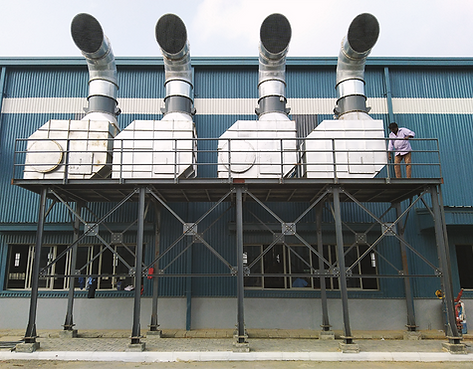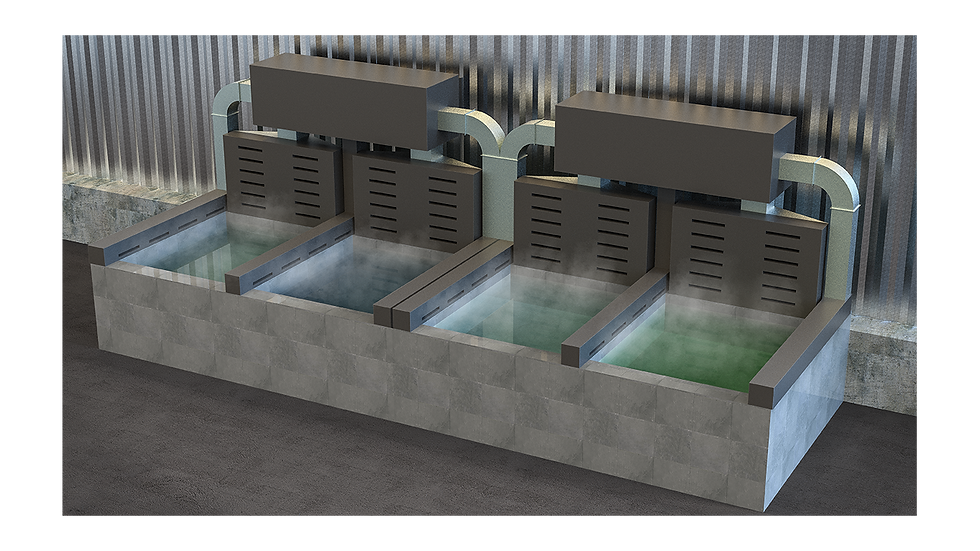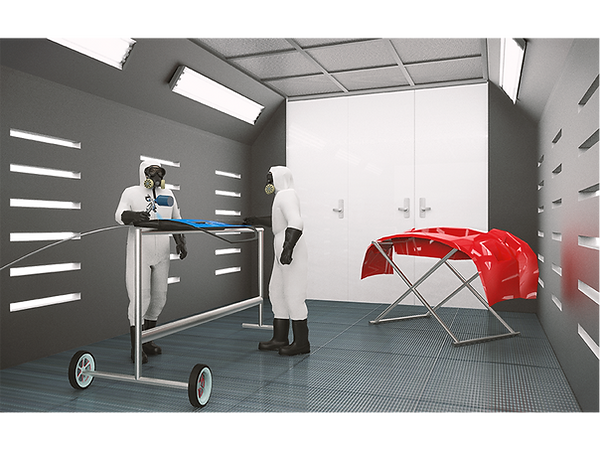
AQC SYSTEMS
Private Limited
FUME EXTRACTION
Fumes emanating inside the factory pose health risks to workers if left unchecked. We design and implement suitable fume extraction systems for better working ambiance. The system and the filters are custom designed according to the nature of the fume. In order to be most effective, fume extraction is carried out in the localized exhaust method where the exhaust hoods are positioned at the source of the fume generation and the hood design varies according to the unique requirements of the production line.
APPLICATIONS:
-
Automobile industry
-
Steel industry
-
Construction industry



ACID FUME EXTRACTION
Raw materials and certain components are treated with acid pickling for improving the quality of the finished product. The acid fumes generated during this process are highly hazardous to the workers and also corrodes the factory environment. To address this issue we have specially designed extraction hoods to isolate the fumes from the factory environment. The fumes are then treated with water in a scrubber tank in which the acid traces are dissolved with water and clean air is dispersed into the outside atmosphere through a chimney.


Describe your image

Describe your image

Describe your image
SCRUBBER WORKING PRINCIPLE:
The acid fumes enters into the scrubbing unit near the bottom and travels upwards. Water is sprayed across the cross section of the scrubber over a packed bed of PVC ferrules. The acid fumes are made to pass through the wet packed bed wherein the acid gets separated and washed down to the water tank. The carried over water molecules along with the exhaust air is trapped in the mist eliminator and then brought back to the water tank, allowing the exhaust air to pass through blower to atmosphere.
APPLICATIONS:
-
Chemical Cleaning Lines
-
Acid Etching lines
-
Metal finishing lines

PAINT FUME EXTRACTION
The usage of a paint booth ensures that paint jobs are done faster and safer. Paint booth minimizes hazardous overspray which in turn prevents fire explosion. It also controls air mixture so that a combustible combination cannot occur and ultimately provides a clean environment for the workers.
-
Dry Type paint booth
-
Wet type paint booth
WORKING PRINCIPLE OF DRY PAINT BOOTH:
Dry type uses layered filters to separate the paint particulate from the constant air stream passing through the exhaust filter. These filters are to be replaced at periodical intervals based on the usage. Clogged filters redirect air to a different path of least resistance, which will affect uniform airflow in the booth. Dry types have relatively short life-span and must be replaced regularly to ensure efficient operations. Despite that, it is the ideal choice for low-to-medium level production volume operations.
WORKING PRINCIPLE OF WET PAINT BOOTH:
Wet type uses water as a filtration medium instead of dry filters. Paint overspray is collected through a slotted panel where it travels downwards to the water tank. When the paint fumes come into contact with the water, water retains the paint particles and allows the filtered air to travel upwards to the baffle section. The water tank eventually gets filled with paint sludge which has to be cleaned periodically. The filtered air is then made to pass through a baffle section where multiple layers of baffles are positioned against the flow of air to act as another stage of filters and to also collect the water molecules which fall back into the tank. The design of air velocity variations across the sections will ensure the desired results.

